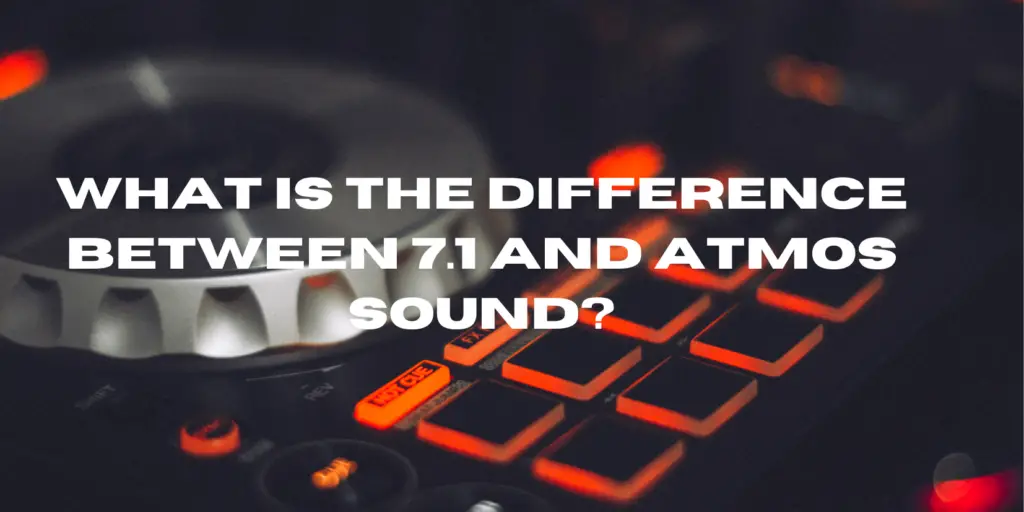When it comes to creating an immersive audio experience, 7.1 surround sound and Dolby Atmos are two popular options. Both formats offer multi-channel audio that envelops you in sound, but they do so in different ways. In this article, we’ll explore the differences between 7.1 surround sound and Dolby Atmos to help you understand which is better suited for your home theater setup.
7.1 Surround Sound: The Classic Multi-Channel Audio
7.1 surround sound is a well-established audio format that has been a staple in home theater setups for years. It involves a 7-channel speaker configuration that provides an immersive audio experience. Here’s the breakdown of a 7.1 setup:
- Front Left Speaker
- Front Center Speaker
- Front Right Speaker
- Rear Left Speaker
- Rear Right Speaker
- Rear Center Speaker
- Subwoofer (Low-Frequency Effects Channel)
Key characteristics of 7.1 surround sound include precise channel placement and directional audio cues. It’s widely used for movies, gaming, and other content, offering an engaging and immersive auditory experience.
Dolby Atmos: Three-Dimensional Audio
Dolby Atmos takes the concept of multi-channel audio to the next level. It introduces the idea of three-dimensional audio, allowing sound to move not only around you but also above you. A typical Dolby Atmos setup includes the following:
- Front Left Speaker
- Front Center Speaker
- Front Right Speaker
- Rear Left Speaker
- Rear Right Speaker
- Height Front Left Speaker
- Height Front Right Speaker
- Height Rear Left Speaker
- Height Rear Right Speaker
- Subwoofer (Low-Frequency Effects Channel)
Dolby Atmos provides a heightened sense of audio immersion, making you feel like you’re inside the audio environment. It’s particularly effective for movies, gaming, and content specifically designed for Dolby Atmos.
Key Differences Between 7.1 and Dolby Atmos:
- Dimensional Audio: The primary difference is the dimensionality of the audio. 7.1 surround sound delivers audio in the horizontal plane, while Dolby Atmos extends it into a three-dimensional space, including overhead sound.
- Upward-Firing Speakers: Dolby Atmos setups often include upward-firing or ceiling-mounted speakers that bounce sound off the ceiling to create the sensation of overhead sound. 7.1 setups do not typically include such speakers.
- Content: Dolby Atmos is designed for content that takes full advantage of its three-dimensional capabilities, offering a more immersive experience for those movies and games. 7.1 is more versatile and suitable for a broader range of content.
- Setup Complexity: Achieving the full potential of Dolby Atmos can be more complex and may require additional speakers and careful setup, while 7.1 setups are relatively straightforward.
Choosing the Right Audio Setup: 7.1 or Dolby Atmos
The choice between 7.1 surround sound and Dolby Atmos depends on your specific needs and setup:
- If you want a straightforward and versatile audio setup that provides a high-quality multi-channel audio experience, 7.1 surround sound is an excellent choice.
- If you seek the most immersive audio experience possible, especially for movies and content designed for Dolby Atmos, Dolby Atmos is the superior option. However, it may require a more elaborate setup and may be overkill for some setups.
Ultimately, the “best” audio setup depends on your audio preferences, content consumption, budget, and the type of immersion you want in your home theater. Whether it’s the classic surround sound of 7.1 or the three-dimensional audio of Dolby Atmos, both formats can provide exceptional audio experiences in the right setting.

